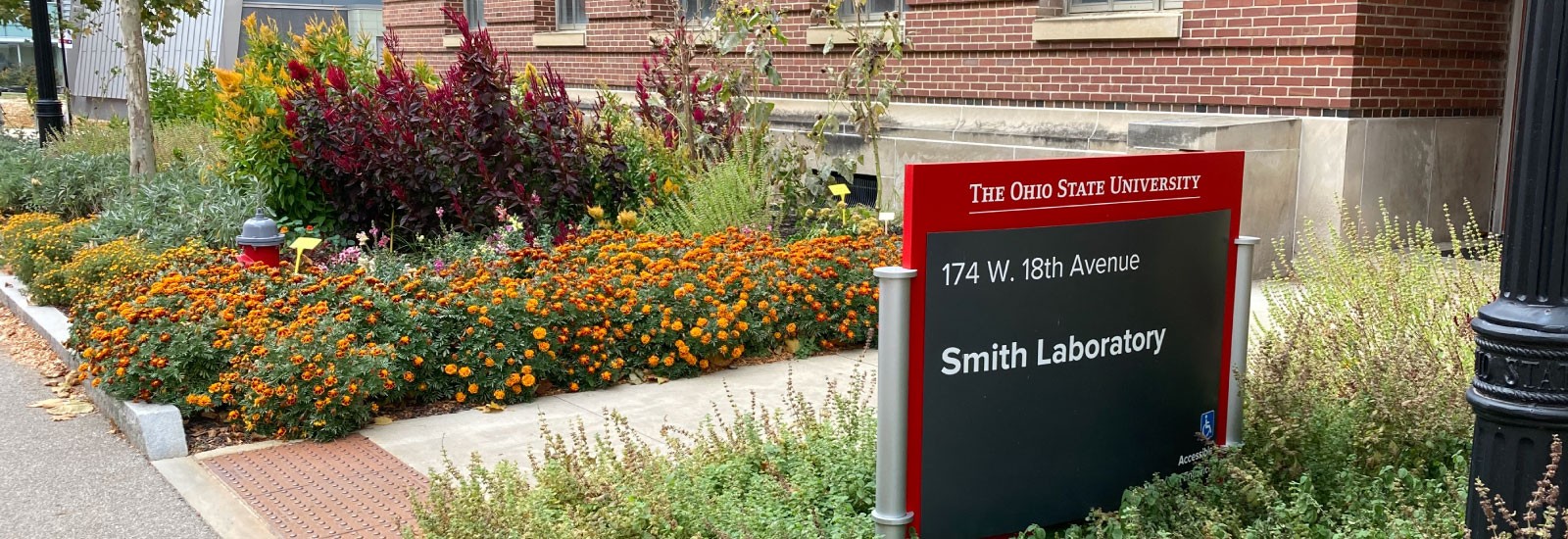Urban equitable agriculture continues to shine through on Ohio State’s campus in the form of the ever-growing Student Farm Garden outside of Smith Lab. This bright spot offers students and faculty an opportunity to learn about sustainable food production in a visually appealing and tasty way.
The Smith Lab Garden is an offshoot of the larger Ohio State Student Farm based at Waterman Agricultural and Natural Resources Laboratory. Six employees and students grow, maintain and harvest over 50 types of vegetables and edible blooms at the farm, such as sunflowers, rosemary, lemon balm, and three types of basil. Farmers split the produce for distribution: a quarter donated to Buckeye Food Alliance and a half is sold through Community Supported Agriculture (CSA) shares. The last quarter incorporates other direct sales (including Ohio State dining services) and what is proudly taken home by student workers and volunteers. This split aligns with the farm’s education and outreach mission. However, some management practice restrictions exist due to the sustainable nature of the farm's four-acre plot. For example, farm caretakers must practice low or no till, use only organic pesticides and limit chemical application as much as possible.
“We want to not only provide food for students and the rest of the community, but learning opportunities as well,” explained Audrey Hollerich, the garden’s student coordinator for the 2022-2023 school year. “For example, we try to teach people things they can do in the dorms or around the urban community, like creating small food and pollinator patches. The garden gives an alternative model of how to make the most of an urban space while also benefiting the soil and wildlife.”
The content of the garden year to year largely depends on what species the coordinators choose to plant combined with already-seeded perennials. This year’s staff decided to continue the theme of an edible pollinator garden, keeping the plot both beautiful and functional with a mix of colors and textures. An edible pollinator garden maintains attention to the issue of food security and shows what urban gardening can look like in Columbus or a similar city.
“After not having a coordinator in 2020, coming back after COVID-19 was a challenge for everyone involved in the garden,” Hollerich said. “But last year, Jillian Horan did an amazing job bringing the garden back to life, and I’m thrilled to take over this year.”
Hollerich has advocated to ensure the garden acts as a bridge between the main campus and Waterman Farm. Students frequently come up to her while she works to ask questions, creating a teaching opportunity on a smaller scale about localized garden practices and their impacts on biodiversity.
Even in her early days as coordinator, Hollerich already had big goals for the plot. Beyond getting seeds in the ground earlier for the summer season, she wants to apply compost so she can better monitor and restore the soil nutrients. Additionally, she’s hoping to add mulch and fine tune the types of plants in the garden, pairing each species with information about how to process and eat them.
“We really value student participation in this process and love answering questions or just chatting with people while we’re out working. Anyone interested in the process, please reach out and get involved,” Hollerich encouraged.
Story by Aurora Ellis, student communications assistant
